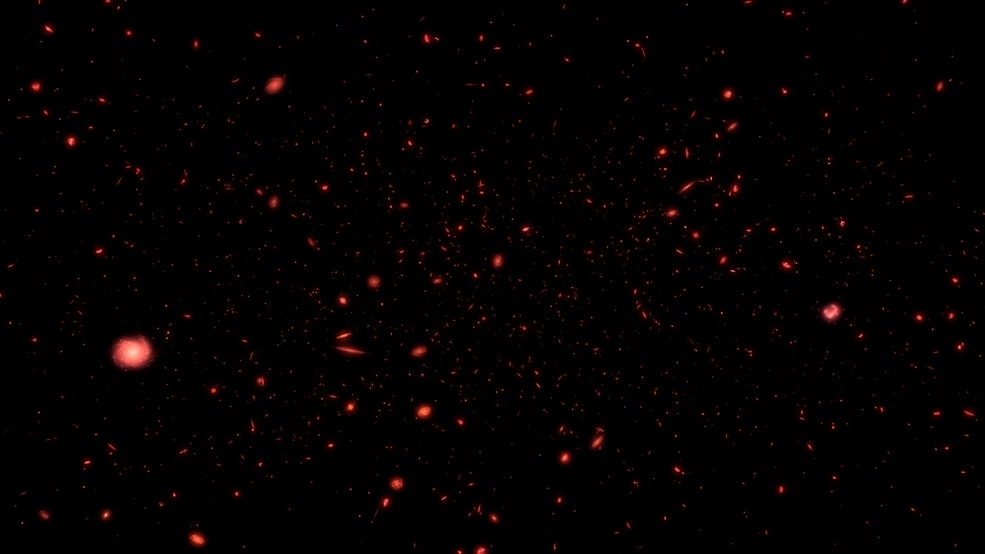India’s #AstroSat Discovers An Ancient Galaxy; Findings Could Explain Origin of Light Post #BigBang - by @MrigDixit
https://weather.com/en-IN/india/space/news/2020-08-26-indias-astrosat-discovers-an-ancient-galaxy
(https://weather.com/en-IN/ind... class="Emoji" style="height:16px;" src=" https://abs.twimg.com/emoji/v2/... draggable="false" alt="📸" title="Kamera mit Blitz" aria-label="Emoji: Kamera mit Blitz">: ESA/Hubble & NASA, A. Filippenko, R. Jansen)
https://weather.com/en-IN/india/space/news/2020-08-26-indias-astrosat-discovers-an-ancient-galaxy
(
As per reports, NASA’s Hubble Space Telescope (HST), which is larger than the UVIT, was unable to detect UV emission from...
...this galaxy as the signals were too faint.
AstroSat managed to identify it successfully since the background noise in the UVIT detector is comparatively lower than the HST.
AstroSat managed to identify it successfully since the background noise in the UVIT detector is comparatively lower than the HST.
The research paper states, “One of the outstanding problems of current observational cosmology is to understand the nature of sources that produced the bulk of the ionizing radiation after the Cosmic Dark Age.
As per reports, this is the first time a galaxy has been observed in the extreme ultraviolet light & will further help to shed light on the conditions of the early universe.

 Read on Twitter
Read on Twitter
 The breakthrough discovery, published on Monday, was made using AstroSat—the first multi-wavelength satellite of India." title="https://abs.twimg.com/emoji/v2/... draggable="false" alt="➡️" title="Pfeil nach rechts" aria-label="Emoji: Pfeil nach rechts">The breakthrough discovery, published on Monday, was made using AstroSat—the first multi-wavelength satellite of India." class="img-responsive" style="max-width:100%;"/>
The breakthrough discovery, published on Monday, was made using AstroSat—the first multi-wavelength satellite of India." title="https://abs.twimg.com/emoji/v2/... draggable="false" alt="➡️" title="Pfeil nach rechts" aria-label="Emoji: Pfeil nach rechts">The breakthrough discovery, published on Monday, was made using AstroSat—the first multi-wavelength satellite of India." class="img-responsive" style="max-width:100%;"/>

 Scientists believe that shortly after the big bang, the universe reached its highest temperature and gradually began to cool. During this time, it consisted mostly of subatomic particles like protons, neutrons, and photons." title="https://abs.twimg.com/emoji/v2/... draggable="false" alt="➡️" title="Pfeil nach rechts" aria-label="Emoji: Pfeil nach rechts">Scientists believe that shortly after the big bang, the universe reached its highest temperature and gradually began to cool. During this time, it consisted mostly of subatomic particles like protons, neutrons, and photons." class="img-responsive" style="max-width:100%;"/>
Scientists believe that shortly after the big bang, the universe reached its highest temperature and gradually began to cool. During this time, it consisted mostly of subatomic particles like protons, neutrons, and photons." title="https://abs.twimg.com/emoji/v2/... draggable="false" alt="➡️" title="Pfeil nach rechts" aria-label="Emoji: Pfeil nach rechts">Scientists believe that shortly after the big bang, the universe reached its highest temperature and gradually began to cool. During this time, it consisted mostly of subatomic particles like protons, neutrons, and photons." class="img-responsive" style="max-width:100%;"/>


